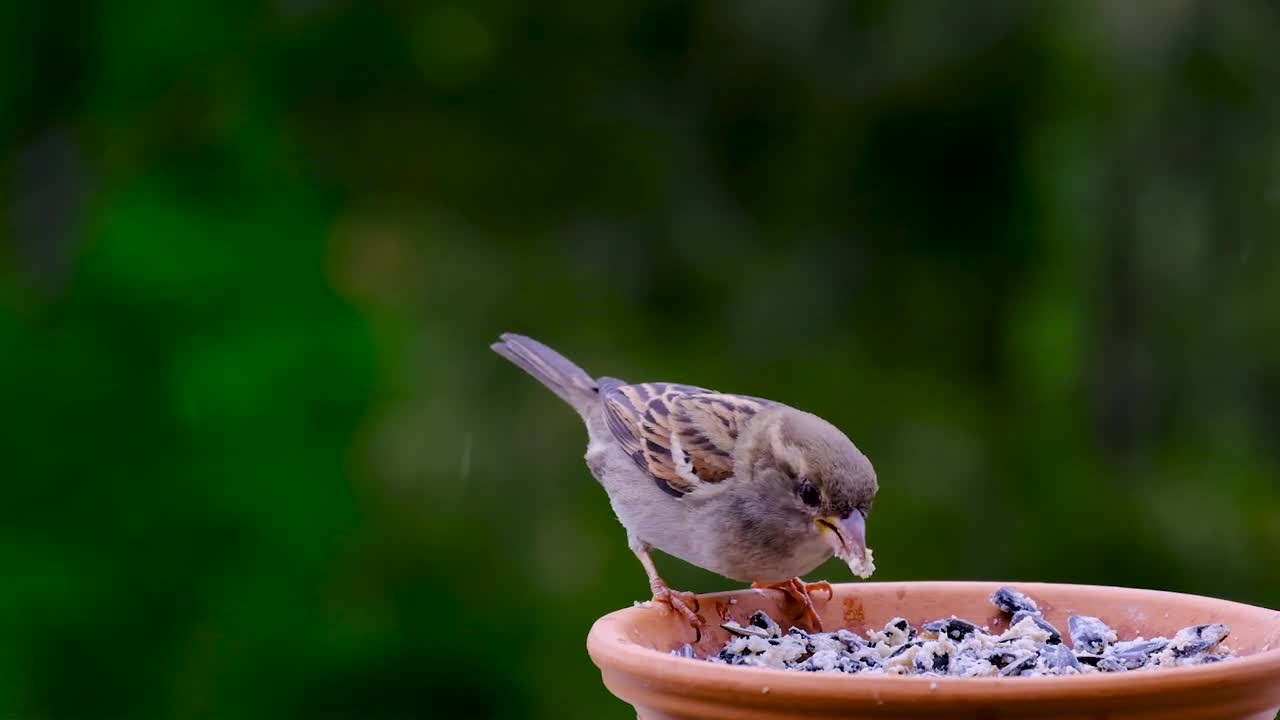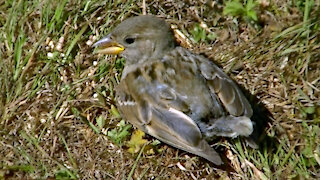Premium Only Content

House sparrow eating food beautifully
The wee little brown birds that you see congregating around people dining outside are probably house sparrows (Passer domesticus). Dull in color but socially vibrant, the sparrow likes to live close to humans, and it is an opportunistic eater. But beyond cheerfully snatching bits of French fries that fall to the ground, sparrows will happily eat many other types of food.
House sparrows are stocky birds with thick bills that are about 6 1/2 inches in length. They are diurnal, meaning they are active during the day and not at night. House sparrows are sexually dimorphic, meaning the males and females look different from each other. The males are gray-headed with white cheeks and a large black mark called a bib across their chests. Their wings are black-tipped. The undersides of the males are buff in color, and their rumps and tail are gray. The females are more muted in color, mostly reddish brown. Both have brown backs with some black feathers as well. Sparrow weight and size differ slightly between the male and female. The average male sparrow weight is 28.5 grams or 1 ounce. The average female sparrow weight is 25.3 grams or 0.89 ounces.
House sparrows are not native to North America. In fact, they are Eurasian sparrows that were introduced, possibly in the 1850s. Their populations have grown well in urban areas where people live. When people moved to farms, sparrows followed. With large corporate farm development, however, sparrows dwindled in the countryside. House sparrows do not tend to live in deserts, grasslands, tropical regions or thick forests. The denser the human population is in an area, the more attractive it is to sparrows.
-
 3:11
3:11
IEnjoyCreatingVideos
3 years agoIECV NV #450 - 👀 Baby House Sparrow Is Now Eating Seeds🐥 7-29-2017
43 -
 0:20
0:20
Margethebirdlady
3 years agoCute House Sparrow Couple
32 -
 LIVE
LIVE
RalliedLIVE
4 hours ago $0.17 earnedWednesday Warzone Special w/ Rallied
175 watching -
 LIVE
LIVE
Omar Elattar
7 hours agoTroy Eckard Shares His Rags to Riches Story
506 watching -
 LIVE
LIVE
Badlands Media
13 hours agoAltered State S3 Ep. 25
1,562 watching -
 LIVE
LIVE
Joker Effect
23 minutes agoRUMBLE IS CHANGING... AND FOR THE BETTER! BUCKLE UP!
314 watching -
 LIVE
LIVE
TheItalianCEO
2 hours agoPlaying Video Games is so much fun!
35 watching -
 12:48
12:48
T-SPLY
6 hours agoDemocrats Keep Digging Their Own Hole Over El Salvadorian Prisoners
2016 -
 1:18:24
1:18:24
Glenn Greenwald
3 hours agoZelensky Rejects Trump's Ukraine Proposal; What Happened to the Epstein Files? Plus: Richard Medhurst Facing Criminal Charges in UK for Israel Reporting | SYSTEM UPDATE #442
58K39 -
 1:01:11
1:01:11
BonginoReport
4 hours agoGeorge Soros Thwarting President Trump’s Border Agenda?! - Nightly Scroll - Hayley Caronia (Ep.33)
83.4K91